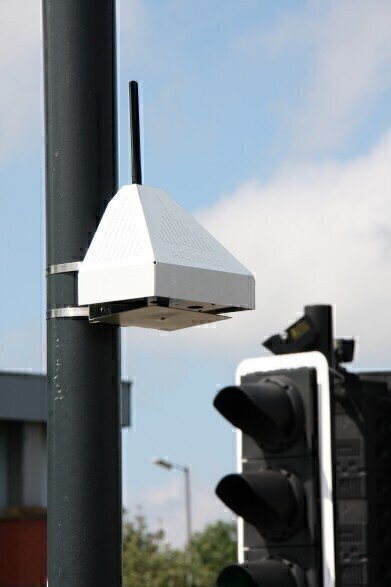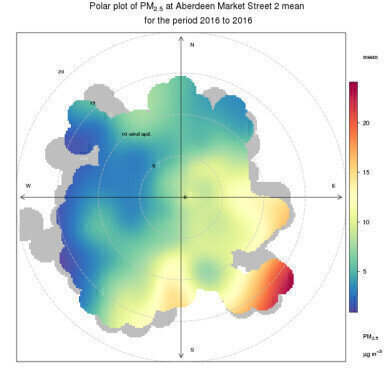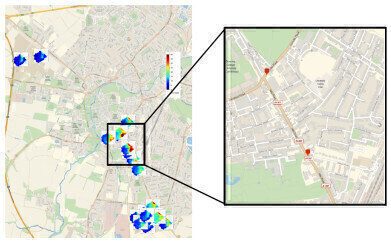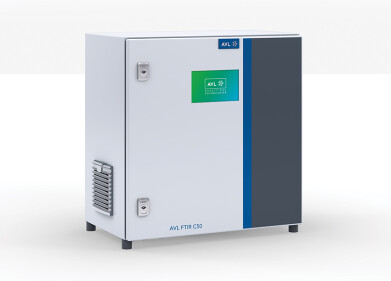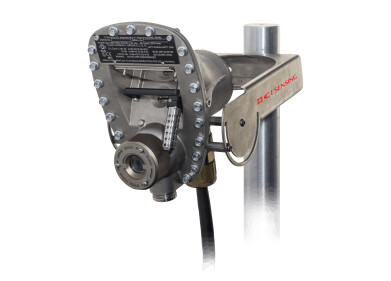Air Monitoring
AQMesh can complement air quality models, reference and indicative data sources
May 10 2017
Leading air quality small sensor system, AQMesh, has recently been shown to work alongside passive samplers and air quality models, as well as complementing reference station networks. A recent study shows AQMesh calibration against diffusion tubes and two 2017 conferences have highlighted the potential of such systems used in an air quality network.
At the Dispersion Modellers User Group Meeting (DMUG, London, April 2017) CERC showed that the model optimisation of 7-day average NO2 concentrations using AQMesh readings as well as reference data affects concentration contours, giving a general reduction, but increase in some areas. The study shows the potential to achieve a higher level of local air quality accuracy from this combined approach.
The CERC study uses near real-time NO2 data from 20 AQMesh ‘nodes’ and five reference stations across Cambridge over three months. The presentation acknowledged the potential from large networks of low cost sensors installed across a city: accuracy and reliability is generally lower than reference monitors, but larger spatial coverage is possible. The study addressed how these sensor data can best be used in modelling. See the full presentation here.
It is important to distinguish between small air quality sensors and sensor systems. The best sensor systems offer optimisation of sensor output through quality control, platform design and sensor output processing and correction for cross-gas effects and environmental effects. Teams which want to invest in similar air quality studies or city-wide monitoring projects can get a head start by using AQMesh - the most developed such system. See the Cambridge case study of latest AQMesh performance.
International air quality experts meeting at RIVM in the Netherlands in February reviewed a range of studies using small sensor systems to measure air pollution, particularly NO2 and particulate matter. Whilst highlighting the need for good characterisation of sensors and the pace of development of this new technology, discussions focused on how to make the best use of ‘low cost’ sensors.
Two speakers highlighted the ways in which a small sensor system can be characterised. The best method is by regularly co-locating with a reference station and comparing readings; another method is similar but one sensor system is co-located against reference and then moved around the other units to allow comparison. Other options include comparison with passive samplers or by comparing co-located sensor systems against each other.
AQMesh NO2, PM10 and PM2.5 readings from the Citi-Sense project (2015-16, AQMesh v3.5) - a superceded version of AQMesh without standard sensor quality control or characterisation - were compared with maps of reference data using data fusion and showed encouraging results. An even earlier AQMesh project in Asia (2014, AQMesh v3.0) compared source apportionment plots generated using reference data to those from co-located AQMesh pods and the conclusions to be drawn about pollution sources were the same.
AQMesh continues to build on years of global studies and continued development, offering the most ‘project-ready’ small sensor system which can be used in an air quality network – including reference stations, passive samplers and modelling - to proven effect. See more information about AQMesh performance and versions.
Digital Edition
AET 28.2 April/May 2024
May 2024
Business News - Teledyne Marine expands with the acquisition of Valeport - Signal partners with gas analysis experts in Korea Air Monitoring - Continuous Fine Particulate Emission Monitor...
View all digital editions
Events
Jul 10 2024 Birmingham, UK
Jul 21 2024 Cape Town, South Africa
Australasian Waste & Recycling Expo
Jul 24 2024 Sydney, Australia
Jul 30 2024 Jakarta, Indonesia
China Energy Summit & Exhibition
Jul 31 2024 Beijing, China
